

2024 |
May 30, 2024. Dr. Joost M. BakkerInfrared free-electron laser-based spectroscopic characterization of metal clusters, metal-fullerene complexes, and their reaction products with small molecules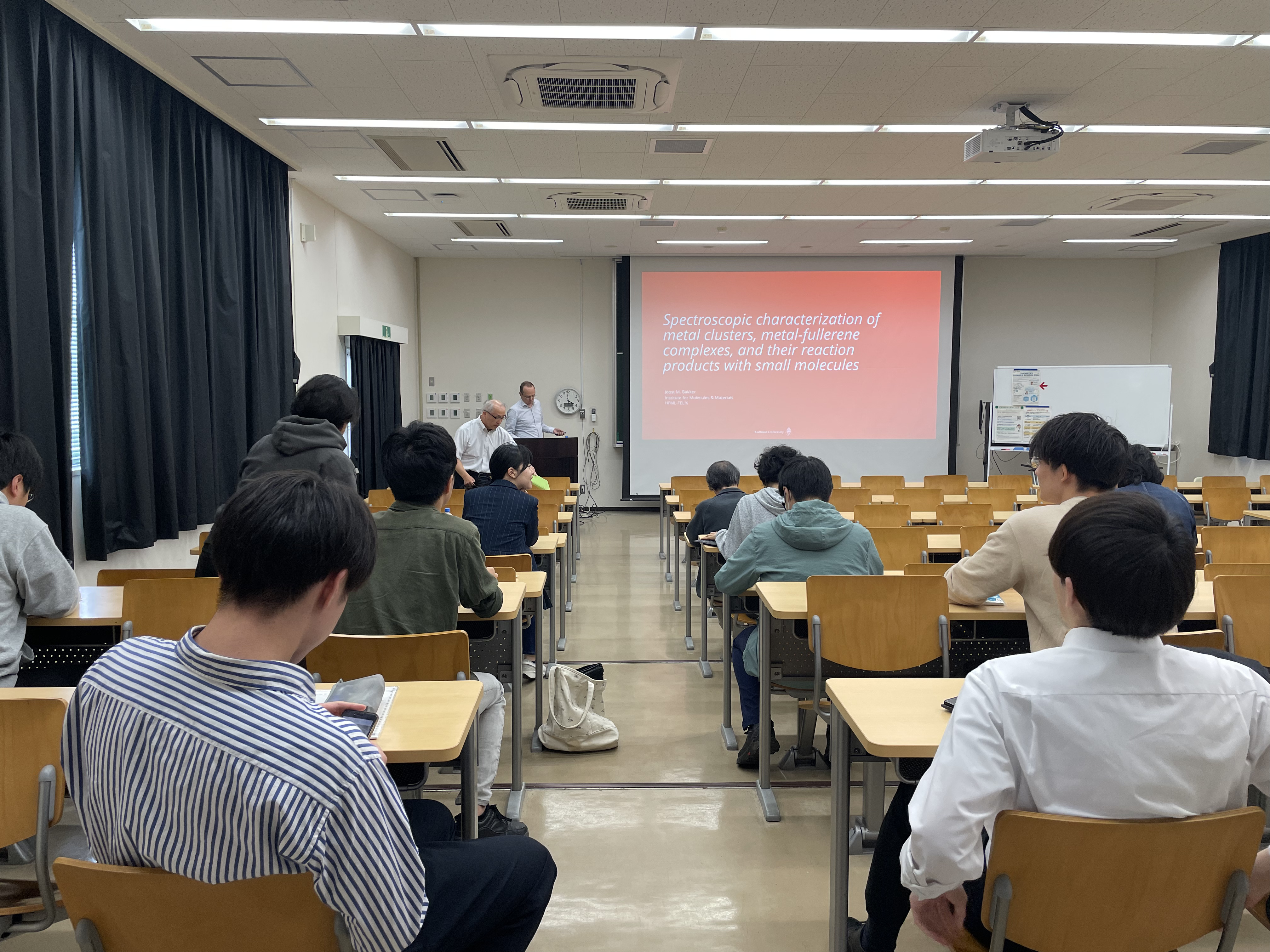
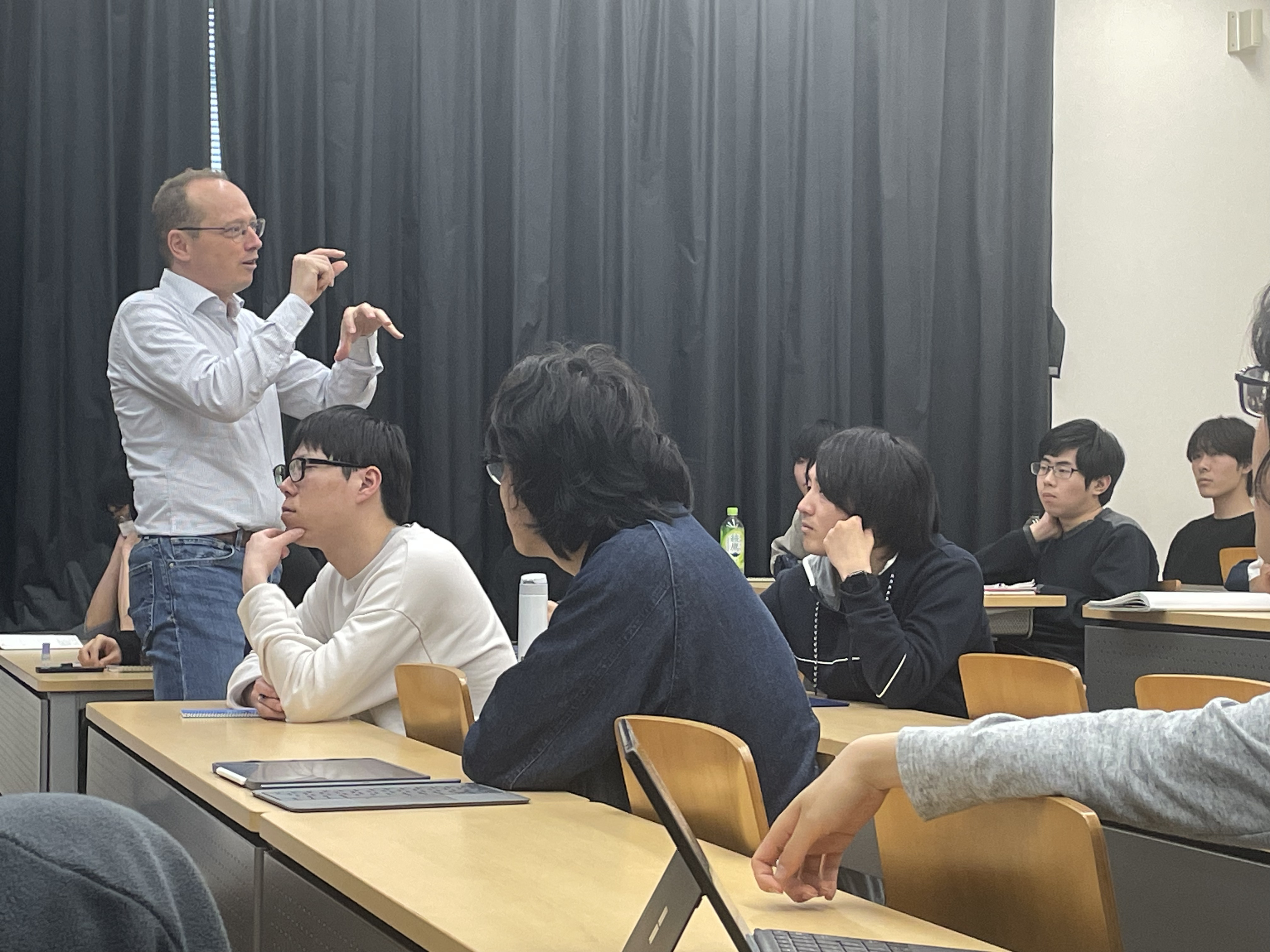
2019 |
July 8-9, 2019. Prof. Dr. Tatsuya Tsukuda化学修飾された超原子と超原子分子 (東北大学理学部化学教室 一般雑誌会講演会)有機配位子で表面が保護された貨幣金属クラスターは、一般的な原子と類似した電子構造をもつことから「超原子」とみなすことができます。ナノスケールの人工原子としての超原子、およびそれらが一部を共有しながら結合した「超原子分子」について、化学合成と構造・物性評価の現状を紹介します。 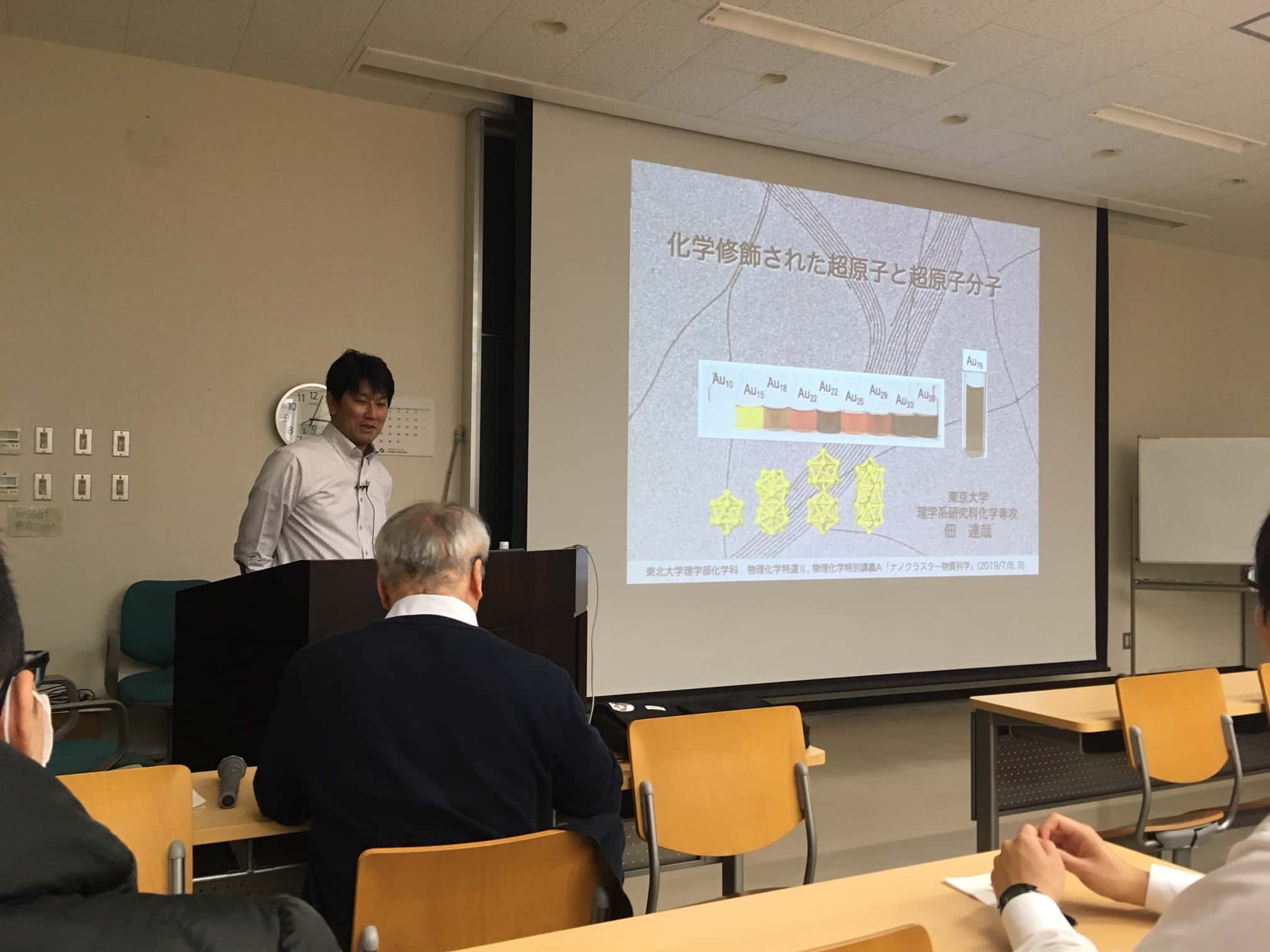
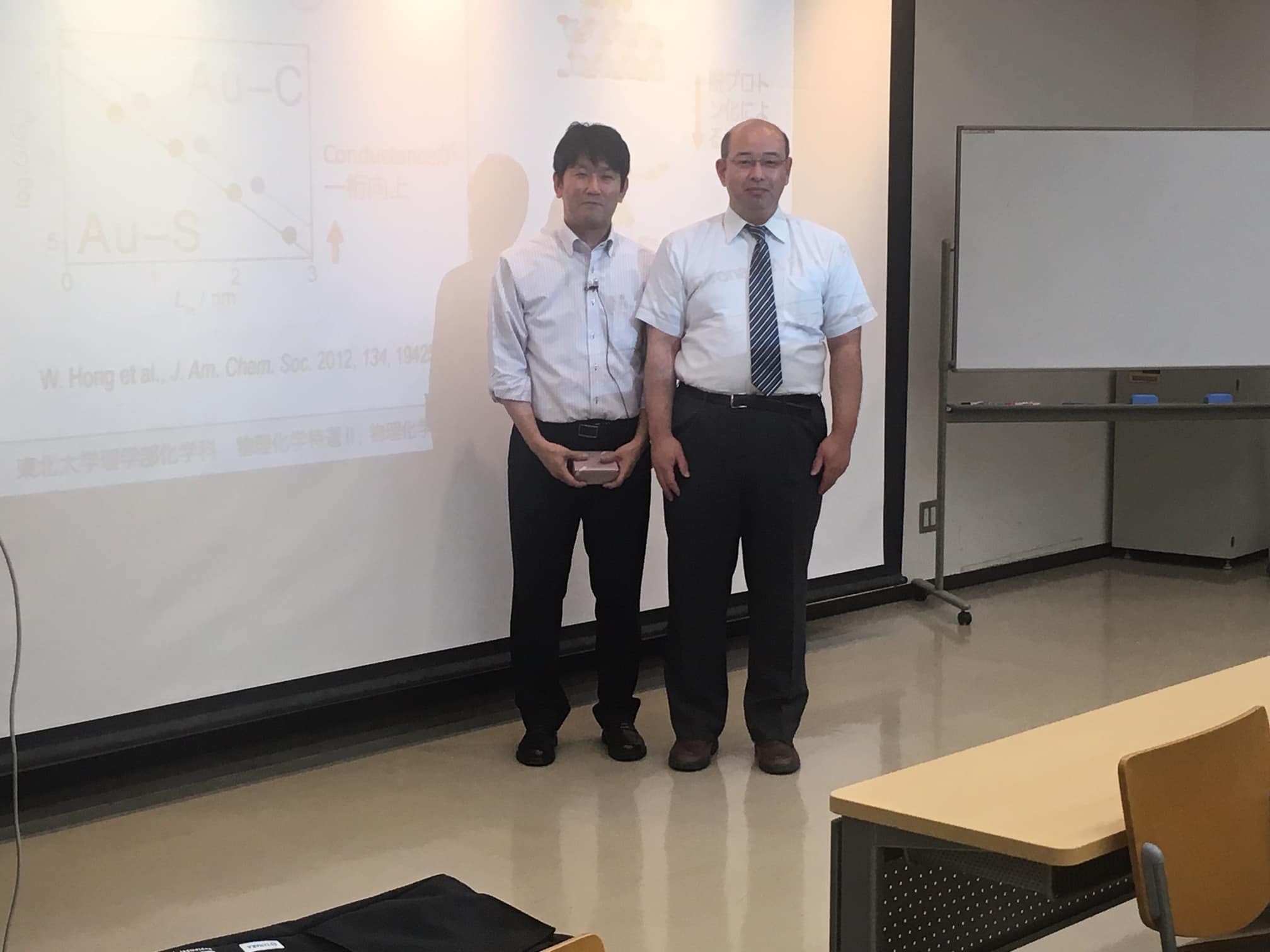
2017 |
November 7-8, 2017. Prof. Dr. Evan Bieske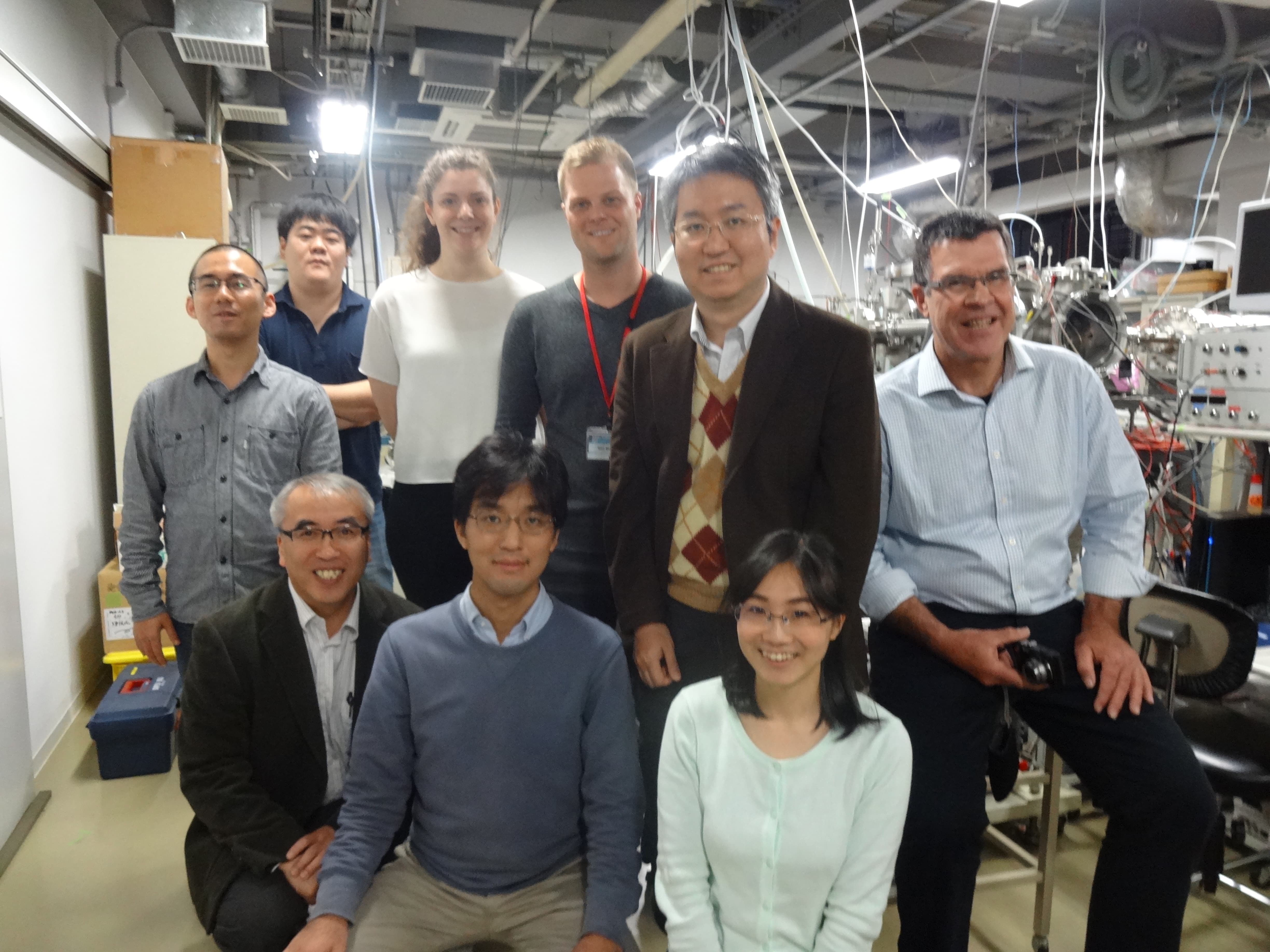 2014 |
October 4-17, 2014.
|
April 3, 2013. Dr. Thorsten M. BernhardtSelective oxidation catalysis with metal clusters in an ion trapGas phase reaction kinetics measurements in a radio frequency ion trap setup under multi-collision conditions are applied to reveal the detailed mechanisms of the catalytic conversions as a function of the metal cluster size and composition.1,2 The experiments aim at one hand at providing conceptual mechanistic insight into well known heterogeneously catalyzed reactions. As an example, the low temperature CO combustion on small palladium clusters will be discussed.3,4 On the other hand, employing this gas phase technique, we recently discovered new catalytic routes that tackle the activation and selective oxidation of methane by employing free gold cluster cations.5-7 In both respects, small isolated metal clusters with accurately defined number of atoms can serve as effective and experimentally tractable model systems for such heterogeneous metal particle catalysts. One particularly important issue is the variable but limited size of isolated cluster complexes that also renders them ideally suited for detailed theoretical treatment, which in turn perfectly corroborates the intention to gain molecular level insight into catalytic processes.8,9 1. T. M. Bernhardt, Int. J. Mass Spectrom., 2005, 243, 1. 2. T. M. Bernhardt, J. Hagen, S. M. Lang, D. M. Popolan, L. Socaciu-Siebert, and L. Woste, J. Phys. Chem. A, 2009, 113, 2724. 3. S. M. Lang, T. Schnabel, and T. M. Bernhardt, Phys. Chem. Chem. Phys., 2012, 14, 9364. 4. S. Lang, I. Fleischer, T. M. Bernhardt, R. N. Barnett, and U. Landman, J. Am. Chem. Soc., 2012, 134, 20654. 5. S. M. Lang, T. M. Bernhardt, R. N. Barnett, and U. Landman, Angew. Chem. Int. Ed., 2010, 49, 980. 6. S. M. Lang, T. M. Bernhardt, R. N. Barnett, and U. Landman, J. Phys. Chem. C, 2011, 115, 6788. 7. S. M. Lang, T. M. Bernhardt, R. N. Barnett, B. Yoon, and U. Landman, J. Am. Chem. Soc., 2009, 131, 8939. 8. V. Bonacic-Koutecky and T. M. Bernhardt, Phys. Chem. Chem. Phys., 2012, 14, 9252. 9. S. M. Lang and T. M. Bernhardt, Phys. Chem. Chem. Phys., 2012, 14, 9255. |
2012 |
September 28, 2012. Dr. Alexandre A. ShvartsburgDifferential Ion Mobility Spectrometry (FAIMS): Principles and Selected ApplicationsDifferential or field asymmetric waveform ion mobility spectrometry (FAIMS) separates and identifies gas-phase ions by the derivative of mobility with respect to electric field strength. While FAIMS was known since 1990-s, its appeal was limited by low resolving power (typically R ~ 10). Employing new planar-geometry devices with high-definition electronics, elevated fields, extended separation times, and gas mixtures with dominant He or H2 fractions, we have raised R to >100 in general and up to ~500 for multiply-charged peptides. This performance enables many new biological analyses, in both global separations (for example, of proteolytic digests) and targeted applications such as resolution of sequence inversions and localization of post-translational modifications, including the smallest ones like methylation and acetylation in histone analyses. In another variation, FAIMS microchips with extreme electric fields filter ions in <100 us and cleanly separate large proteins from other species using the dipole-locking effect. We shall also discuss metabolomic applications, comprising lipid classification and regioisomer separations, and the new FAIMS approach involving oligomers. September 26, 2012. Dr. Gereon Niedner‐SchatteburgTwo color enhanced IR-MPD spectroscopy of organic acids and of oligo-nuclear metal complexes September 24, 2012. Dr. Knut R. AsmisRecent Advances in the Vibrational Spectroscopy of Mass-Selected Cluster Ions |